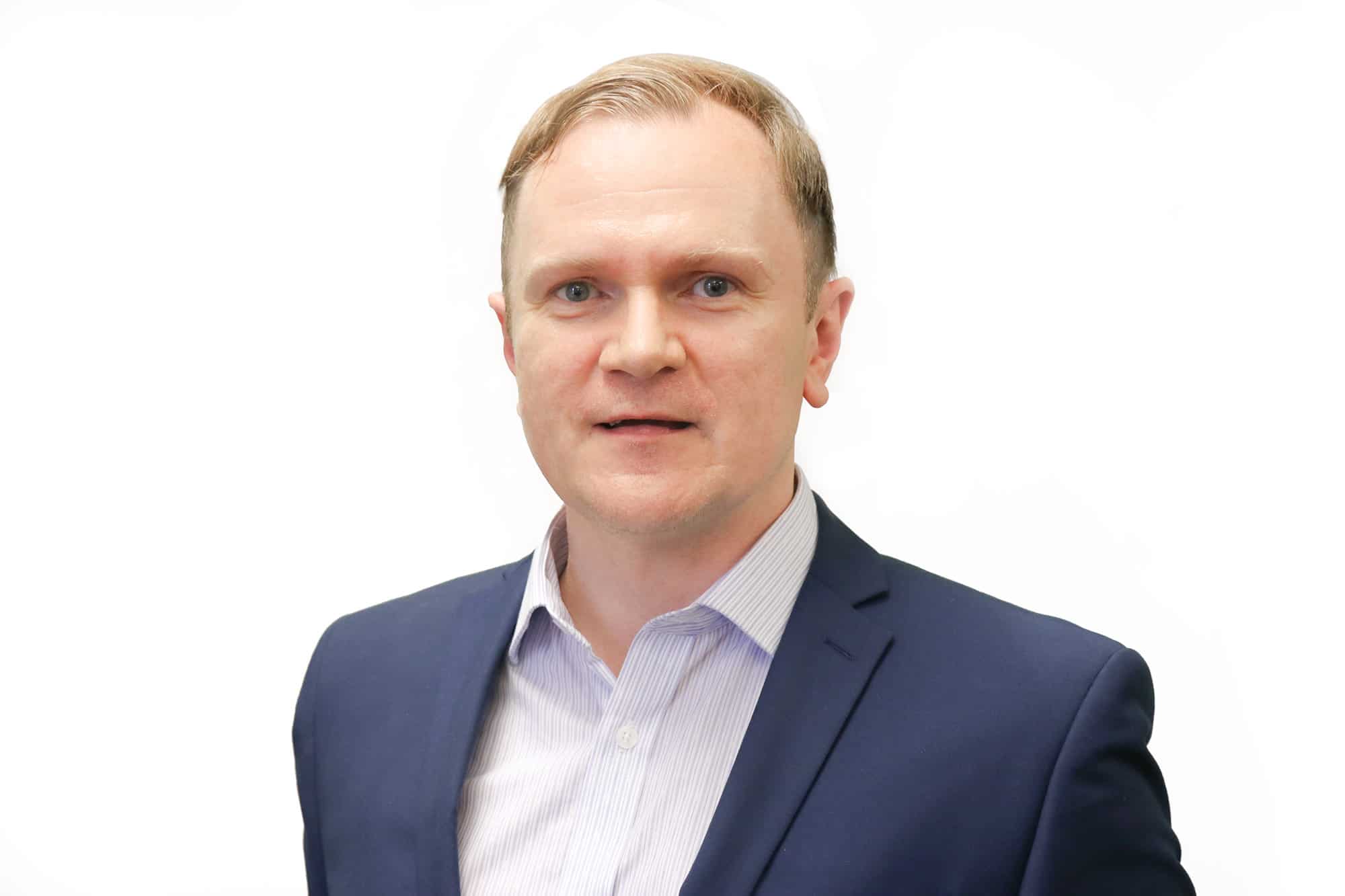ukactive CEO Huw Edwards delivered the opening address at Elevate this morning (Wednesday 14 June 2023) – read his full speech below
Good morning, everyone.
Many thanks Lucy and the Elevate team for inviting me to speak this morning.
It’s great to be back at Elevate, which is an important milestone in the sector calendar.
Both the ukactive team and I are looking forward to two days of engagement with our members and partners.
Two days of discussions, debates, ideas, epiphanies, and solutions as we look to keep moving this sector forward.
Our sector is the engine room of physical activity in the UK, a hive of innovation and creativity, a united movement behind our nation’s health, happiness, and productivity.
Your passion and dedication are driving the positive change we seek for our communities.
What, no doubt, will be the common theme of our engagement here today will be our genuine desire to grow and develop this sector for the common good.
This is a strong bond that unites us all.
To kick of Elevate this morning I want to take this opportunity to talk to you today about choices.
- The choices we’ve made as a sector over the past few years.
- The choices we face now in a changing operating landscape.
- And the choices the Government must make to improve our nation’s health.
Firstly, the choices we’ve made over the last few years.
I’m very proud to have worked with our members and partners in this very turbulent period.
This sector has had everything thrown at it, trying to navigate both the pandemic and the energy crisis.
In the face of these twin crises, the sector chose to work together to address the common, existential threats it faced.
During the pandemic, we worked together to provide the evidence and reassurance to the Government, its agencies, and health bodies, that we were safe to reopen.
Our collaboration on safety data – the analysis of over quarter of a billion visits to our members facilities – helped secure our earliest possible reopening back in 2021, which was worth an estimated £600 million to the sector.
In the face of the energy crisis, we have again chosen to collaborate.
Our collaboration on further data analysis overwhelmingly proved the energy-intensive nature of parts of our sector.
As a result, this evidence-based lobbying leading into the 2022 Autumn Statement and 2023 Spring Budgetsecured both business rate relief and government funding for public leisure pools.
Now these outcomes are not perfect – nothing is.
We know the financial pain continues and our role at ukactive is to be unrelenting in highlighting to the Government and addressing the issues that remain from both the pandemic and energy crisis.
But the choice we made to collaborate and present the best possible case for support in both the pandemic and energy crisis meant the Government listened and acknowledged our plight.
As a result, this sector now has a consistent audience with the Government – something it’s never historically achieved.
And this is also something we cannot take for granted as we move forward.
The choices we now face in a changing operating landscape
This leads me to the second area I wish to cover – the choices we now face in a changing operating landscape.
The latest figures from Deloitte in its European Health and Fitness Market report show the following about the UK market:
- 7,400 clubs and facilities
- 10.3 million members, and
- 15.5% penetration rate (the share of adult population with a facility membership)
The numbers show a UK market that continues to recover, whilst also recognising the disruption from the energy crisis we still navigate.
This makes this recovery something that requires continued attention and support.
Furthermore, this recovery is taking place in a changing operating landscape with shifting consumer ambitions around health and wellbeing.
The pandemic did expose the health fault lines that run like scars through our communities and placed a greater focus on personal responsibility for our own health and wellbeing.
The question now is how we, as a sector, effectively engage with a population becoming more self-aware of its responsibilities for health.
So, what do we want to achieve? What is our North Star?
In 2021/22, ukactive worked with its membership on the Vision 2030 Strategy, with the objective of reaching a 20% penetration – that’s more than five million new users – by the end of decade.
This would propel the UK to close to the top three nations for membership as a percentage of their national population – behind only Norway, Sweden, and the US.
The strategy is grounded in the growth and development of our sector.
When I talk about growth and development, I am talking about an honest appraisal of the work me must do to convince people – not in this room, but outside – that we’re for them.
And that appraisal requires us, as a sector, to make choices.
Let me give you some examples.
Data and insight
Firstly, let’s focus on data and insight.
I want ukactive’s members and partners to be able to demonstrate the scale, impact, and value of the UK health and fitness market, through high-quality data and insight.
This is fundamental to both future investment into the sector, and also leveraging more from our relationship with Government.
But, for far too long this has been absent, and as a result we haven’t been able to provide a comprehensive, accurate representation of the market – and the value we provide – back to the sector, to wider influencers and investors, and the Government.
So going forward I want this sector to have the following:
- To have a digital ecosystem based on aggregated data from across the sector.
- To have common data standards, to allow consistent analysis and reporting.
- To have new tools and systems that help organisations understand the benefit that they create.
Consistent, regular, credible data sets that cover public, private, independent operators, and broadened with fresh consumer polling will give this sector a foundation it requires, and it deserves.
The choice we have to make is whether to embrace this new model of reporting and whether we are prepared to move away from the past.
Standards reform
Secondly, we have a choice to make about the standards we want to set as a sector.
This area is hugely important as we look to create a more inclusive offer and attract a more diverse audience to our services. This is a trigger for our long-term growth.
Over the past year we’ve worked really hard with our membership and also our Standards and Legislation Committee on the development of The Active Standard.
With partners, we will look to roll this out across our membership over the next year.
This work – and the development of The Active Standard – is driven by a desire to keep pushing ourselves to achieve our best for the customers we serve.
The development of The Active Standard complements our work with the sector on diversification.
The ambition to attract more people from key parts of society – over-55s, ethnically diverse backgrounds, those with disabilities, women and girls, and the LGBTQ community.
And we all know the issue of standards is hugely important to attracting more women and girls to our facilities, and that’s why I’m proud that ukactive has been working in partnership with Sport England and the This Girl Can campaign on this agenda.
It is important as we, as a sector, need to understand, acknowledge, and act on factors in our control that will make our facilities more inclusive to use for women and girls.
This is also a real opportunity to learn from our peers already making strides in this area and continue that sense of collaboration that has been a hallmark of our sector’s high standards during the pandemic.
Now, some will say that we as a sector alone cannot solve deep-seated societal issues around behaviour and female safety. And this is true.
However, we must also accept our responsibilities as these important societal issues do not dissolve at the door of our facilities, they do not disappear when our customers cross the threshold of our sites.
We are part of a collective responsibility and what we do and how we develop contributes to the bigger solutions that everyone is seeking.
I, for one, fully accept this responsibility not just in my role as CEO of ukactive but as a male voice in this sector.
Now, we’ve had a positive response from many parts of the sector on this collaboration with This Girl Can, but we need to see more organisations engaging, more wanting to learn and evolve their services and processes, and more taking a public stand on our societal challenges.
Again, this is a choice. A choice that comes with some honesty and reflection, some vulnerability, but importantly this is the right choice and the right path to follow.
Digital transformation
We also face a choice around how our digital maturity progresses as a sector.
Last week ukactive launched the 2023 Digital Futures consultation, which offers fitness and leisure operators, national governing bodies, and active partnerships free digital benchmarking and strategic recommendations, in collaboration with Sport England.
I urge everyone here today to engage with the consultation as a way of developing their organisational capability.
Many fitness and leisure operators acknowledge digital services are essential for future growth, considering the rising tide of consumers’ digital expectations.
But we need this to be a blanket approach.
Based on our experiences with other, more digitally mature, sectors, it’s fair to say that we now expect interactions to be seamless, intuitive, and simple by design.
We expect ease of booking and payment, swift resolution of enquiries and a degree of personalisation. Indeed, as the retail sector knows, having all these elements in place is critical to brand loyalty.
In the recent Retail Week survey, of 50 large UK retailers, 60% of the businesses surveyed reported they have increased their technology budget between 20% and 50% during the past two years.
And 18% have seen the size of their technology teams increase by 50% or more over the past two years, in order to continually provide rich digital experiences to consumers.
The fitness and leisure sector has worked tirelessly to provide online payment and self-serve options, as well as booking functionality, but plenty of work has still to be done to form effective, connected digital fitness strategies.
In fact, it is an ever-evolving piece of work.
ukactive’s Digital Futures Group – many of whom are represented at here at Elevate – is working to support organisations across the sector to take the next steps in their digital journey, regardless of their digital maturity.
I would urge everyone here to engage with it.
The choices for Government
Finally, the choices the Government must make to improve the health of the nation.
The CEO of the NHS Confederation, Matthew Taylor, assessed the situation well recently when he said: “The NHS needs the support of people just as much as the people need the support of the NHS.”
The NHS is unable now, and even more so in the future, to fully service the demands being asked of it unless there is change.
The collective effort required to protect this vital institution for current and future generations is immense butachievable with the necessary will.
Furthermore, the Prime Minister and his government know there is limited economic growth – a priority and one of their five pledges – without a healthier society.
According to the Times Health Commission, ill health among people of working age is projected to cost the UK economy approximately £150 billion a year (equivalent to 7% of GDP) and the cost has increased 60% in the past six years.
The Government must – if it wants to preserve the NHS – make the shift to prevention.
But it does have a choice on how effective and robust that preventative strategy can be.
And it will only be effective and robust if it fully leverages the potential of this sector and the people in this room.
We want to change and grow the role we play in addressing some of the urgent societal issues we face, making a significant contribution to several of the major challenges in the Government’s in-tray, including:
- The operational pressures facing the NHS – our ability to help manage these pressures and the positive impact we can have on speeding up elective recovery.
- The crisis in adult and young people’s mental health – where our sector demonstrates proven results in improving wellbeing, as well as reducing loneliness and crime.
- The growth in long-term sickness absence, MSK conditions, and people of working age becoming economically inactive, with its longer-term impact on health service use and productivity.
The size, scale, agility, and professionalism of this sector means that – with a shared ambition with the Government – it can make tangible improvements in the nation’s health.
In order to do so, the Government must see this sector as less of a photo opportunity, but as an industry in its own right that requires a dedicated strategy for growth.
In the coming weeks we expect to see a new strategy from the Government.
With this strategy the Government has a choice to place us – the engine of physical activity – at its heart.
And for this strategy to be credible it must commit – at the very least – to the following:
- A commitment to working with the sector on the clear defining of the vital role public sector leisure plays in our health and community fabric, being that extension to our local community health services.
- Also, a commitment to work with the sector to remove systemic barriers to growth and enable the sector to deliver tangible improvements to the health of the nation.
VAT is a prime example.
Four of the top six nations in the world who have the highest penetration rate for membership versus population have a lower rate of VAT on fitness and physical activity than they do on other products and services.
Our nearest trading partner, Ireland, has a VAT rate on physical activity and fitness services of 9%, compared to the UK’s 20%. This despite the Brexit benefits we were promised.
The Government must work with the sector on this case, providing clarity on the required data required, and further connecting the argument to HMT to improving the health of the nation.
There is now an urgent need for this Government to leverage the huge value of this sector for the national good. There is no time to waste as institutions like the NHS that we all depend on creak and stretch to breaking point.
Furthermore, as we enter a General Election cycle – due in 2024 – it will be important for all the main political parties to set how clearly how they plan to prioritise physical activity as part of ambitions to improve the economic, health, and social wellbeing of the nation.
We at ukactive, along with partners, will be delivering a General Election engagement plan unparalleled in the sector’s history given the importance this moment presents.
Conclusion
To conclude, I think this sector has achieved a huge amount in the past few years.
It has shown incredible resilience.
It has collaborated to secure levels of support that mean we’re here today.
And it is through further collaboration – and the choices it now makes – that will help it move forward.
Much has been achieved yet there’s much more still to do to grow and develop and play our fullest role.
Through choosing to collaborate, we can take the next steps to make this sector fully connected to communities across the whole country.
This sense of collaboration will also help ukactive’s own development and growth as an organisation working for you.
At the heart of this will be an organisation built on the foundations of
- empathy,
- humility,
- hard work,
- and a wholehearted passion for the sector.
We look forward to working with you to drive our sector forward.
For example, today we’re delighted to welcome Future Fit as our latest strategic partner – in this case, for our education and workforce agenda.
Partnerships such as this will help us to secure the changes we seek, and the success we crave.
Thank you very much for listening and I look forward to catching up with everyone over the next few days.

More People More Active More Often




